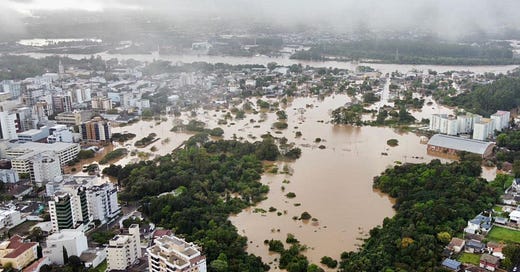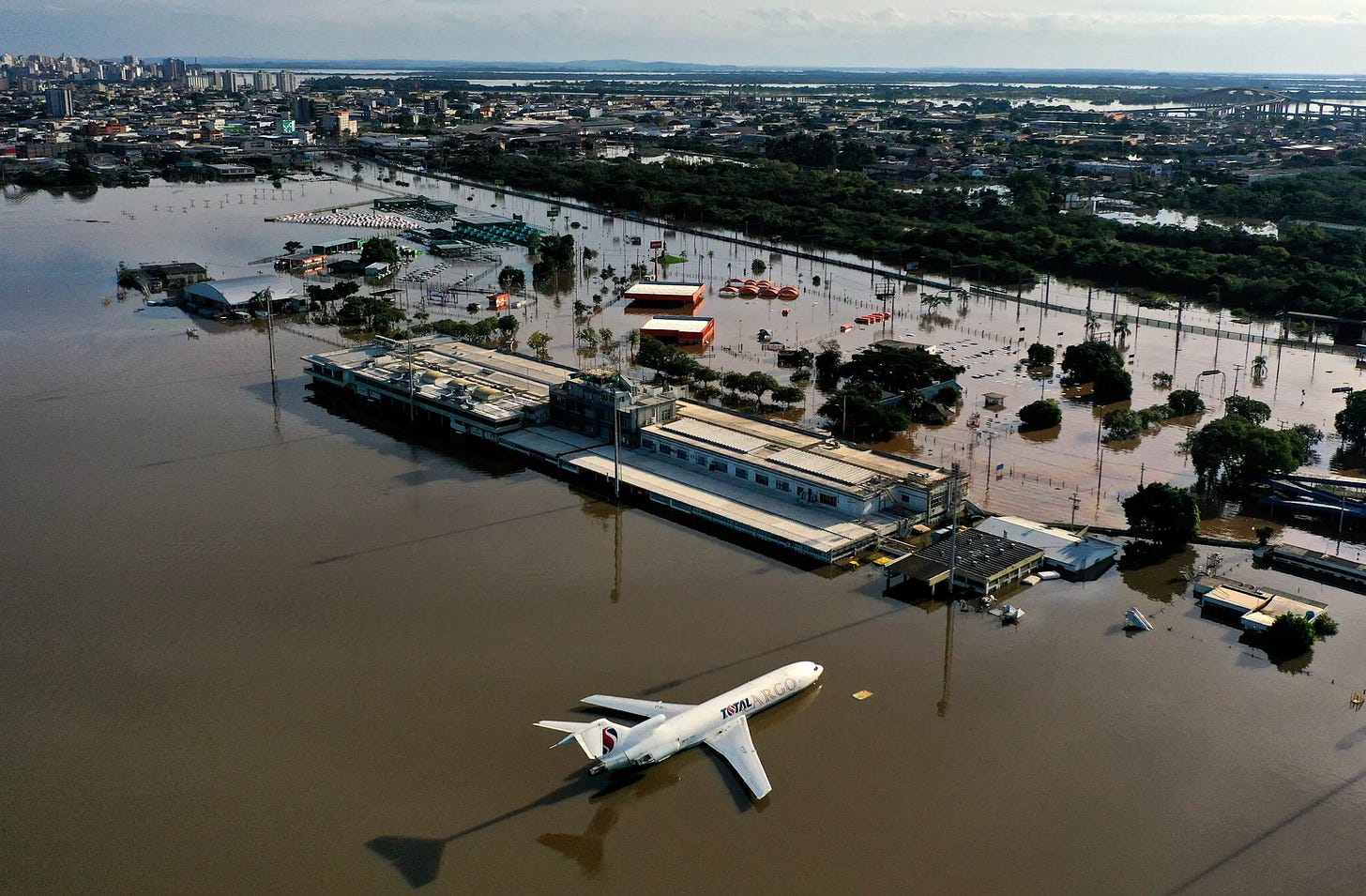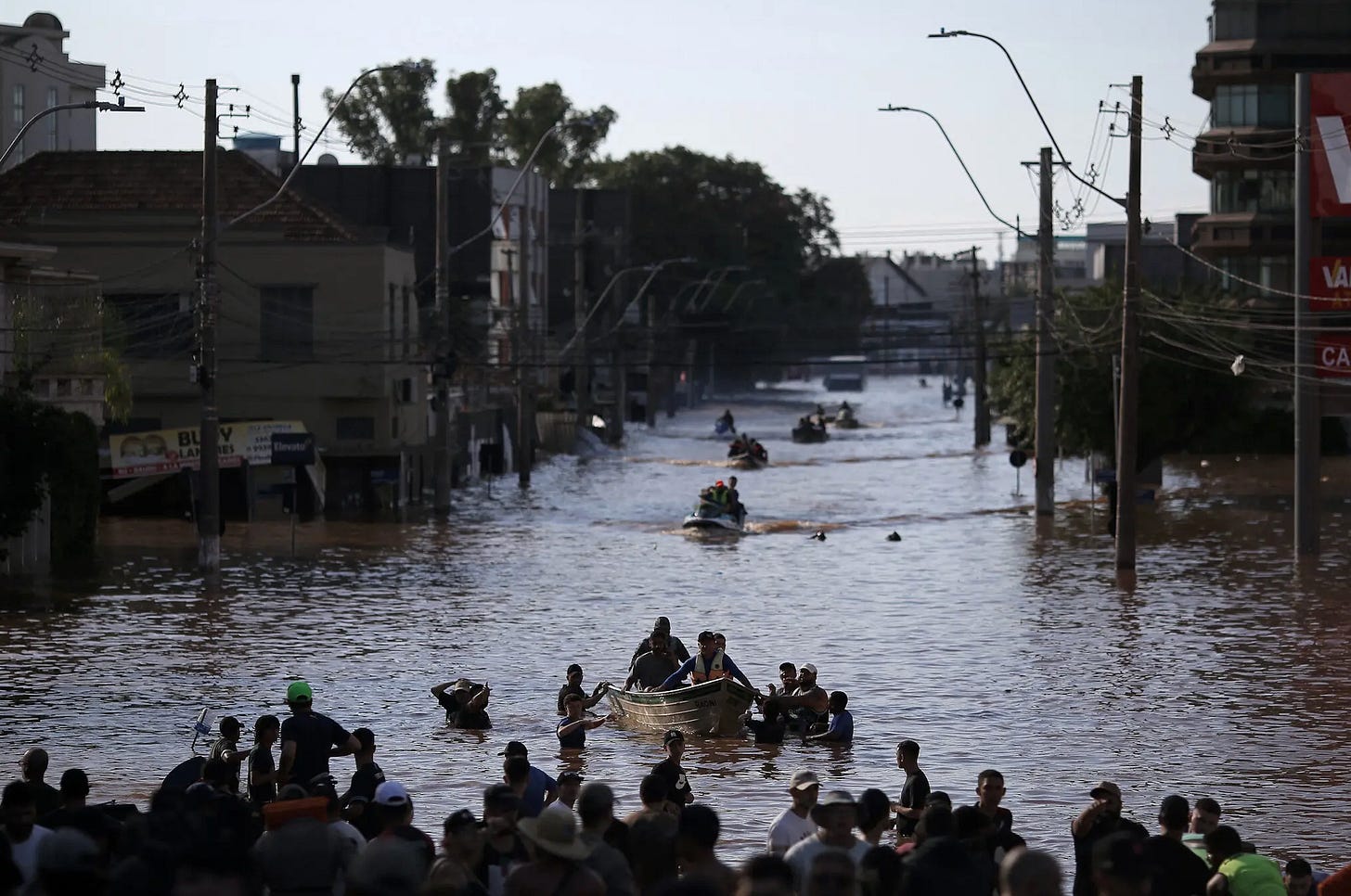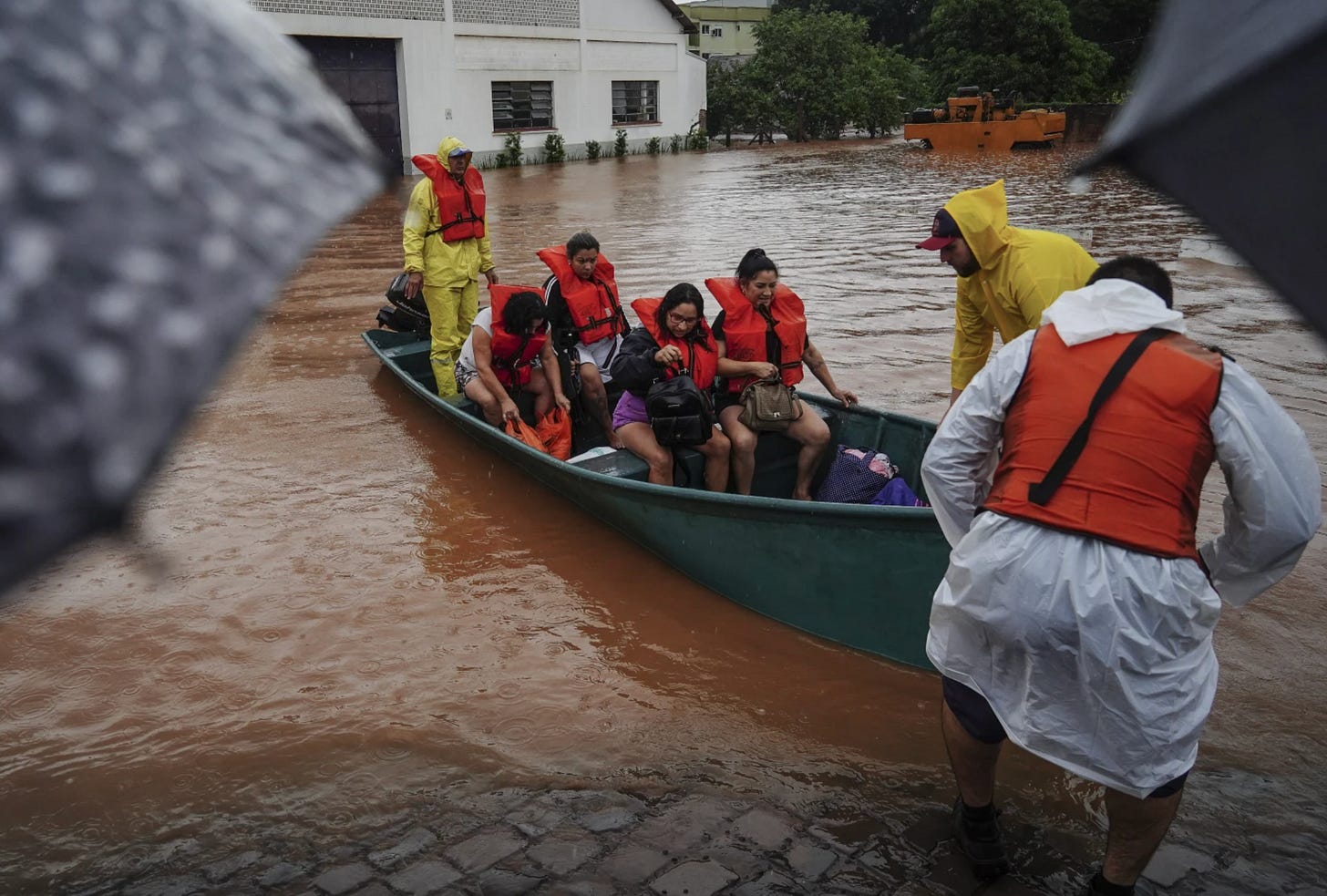Brazil: Catastrophic Floods Hit Southern State
Understanding what is happening, its connection to climate change, and how you can help.
Rio Grande do Sul, a significant state in Brazil, boasts a large population and plays a crucial role in the country’s economy through its diverse industries, agricultural sector, strategic border location, and growing tech industry. As of 2020, it was home to approximately 11.4 million people, ranking it Brazil’s fifth most populous state. Its unique cultural heritage is an important part of the country’s diversity.
Located in southern Brazil and bordering Uruguay and Argentina, Rio Grande do Sul features varied terrain with plateaus and river valleys. Its topography can induce orographic rainfall, which causes heavy precipitation when moist air rises and cools. These features, combined with the region’s growing vulnerability to climate change, increase its susceptibility to extreme weather events.
Over the past week, catastrophic flooding has severely impacted the state, resulting in significant loss of life and widespread damage. The flooding has been characterized as the worst in over 80 years and has affected 417 of the state’s 497 cities, with over 1.45 million people impacted. In addition to the topographic features, the heavy rain is also due to the El Niño phenomenon that has worsened the wet weather patterns in the region.
Climate change is leading to more atmospheric moisture, increasing the risks of downpours. The global increase in climate-driven floods is reflected in what is happening in Brazil, which are caused by rising sea levels, frequent severe storms, and altered precipitation patterns. El Niño is a natural climate phenomenon that causes warming of surface waters in the Pacific Ocean. This phenomenon had a significant impact on the extreme weather events that occurred in Rio Grande do Sul. The warming of the ocean can increase atmospheric moisture, which in turn can lead to heavy rainfall and flooding in certain regions.
While El Niño is a natural climate phenomenon, it's crucial to recognize that human-induced climate change is amplifying the severity of floods. This is done by modifying the frequency and intensity of extreme weather events. As global temperatures rise, it's anticipated that El Niño events will occur more frequently and intensely, resulting in increased severe flooding and other extreme weather conditions. This underscores the importance of taking action to mitigate the impacts of climate change. Preparation and prevention can help reduce the severe devastation of floods on the most vulnerable populations globally.
The government of Rio Grande do Sul and Brazilian President Luiz Inácio Lula da Silva are actively involved in relief efforts. According to the Washington Post, “Lula told senior congressional and judicial officials that the country needed to change its approach to climate-driven disasters. He called for a national plan to prevent ‘climatic accidents’ and directed top environmental lieutenant Marina Silva to begin forming a strategy.” Additionally, the President attributed the destruction in Rio Grande do Sul to the global community’s lack of response to climate change.
The National Confederation of Municipalities estimates damages at approximately 4.6 billion Reais (USD 930 million). There is a high risk of continued flooding, with more rains expected in the coming days. On Tuesday, the Brazilian Congress declared a state of calamity in Rio Grande do Sul. This will expedite federal funding to help with disaster relief and reconstruction of flood-affected areas.
The catastrophic flooding in Rio Grande do Sul has left many communities in urgent need of support. Your contribution can assist in immediate disaster response, support families affected by the floods, and aid in rebuilding efforts. Here are some trustworthy organizations where you can direct your donations:
One the largest relief campaigns related to this disaster, with already over 1 million supporters. If donating in US Dollars, use this link.
Brazil Foundation - Rio Grande do Sul Humanitarian Campaign
An organization which has a strong presence in the affected regions, raising critical funds for immediate relief and long-term rebuilding efforts.
The Center for Disaster Philanthropy - Global Recovery Fund
A disaster-specific foundation that helps increase the effectiveness of philanthropic response to disasters and humanitarian crises, including this one.









